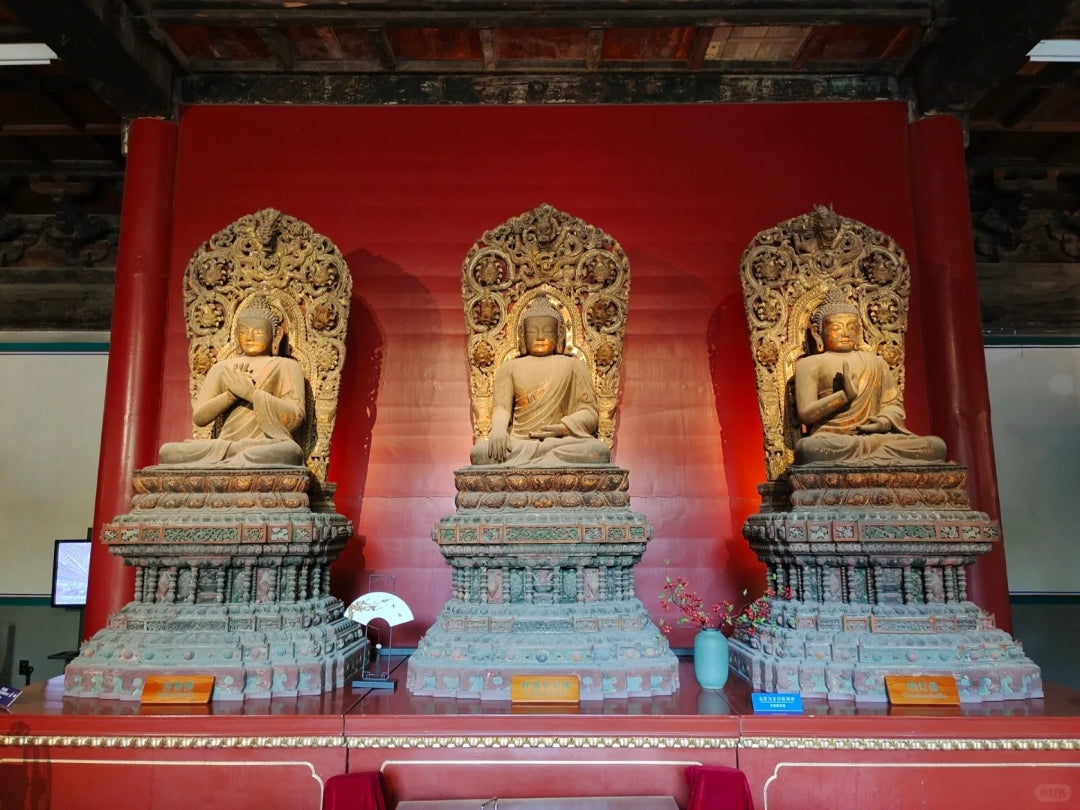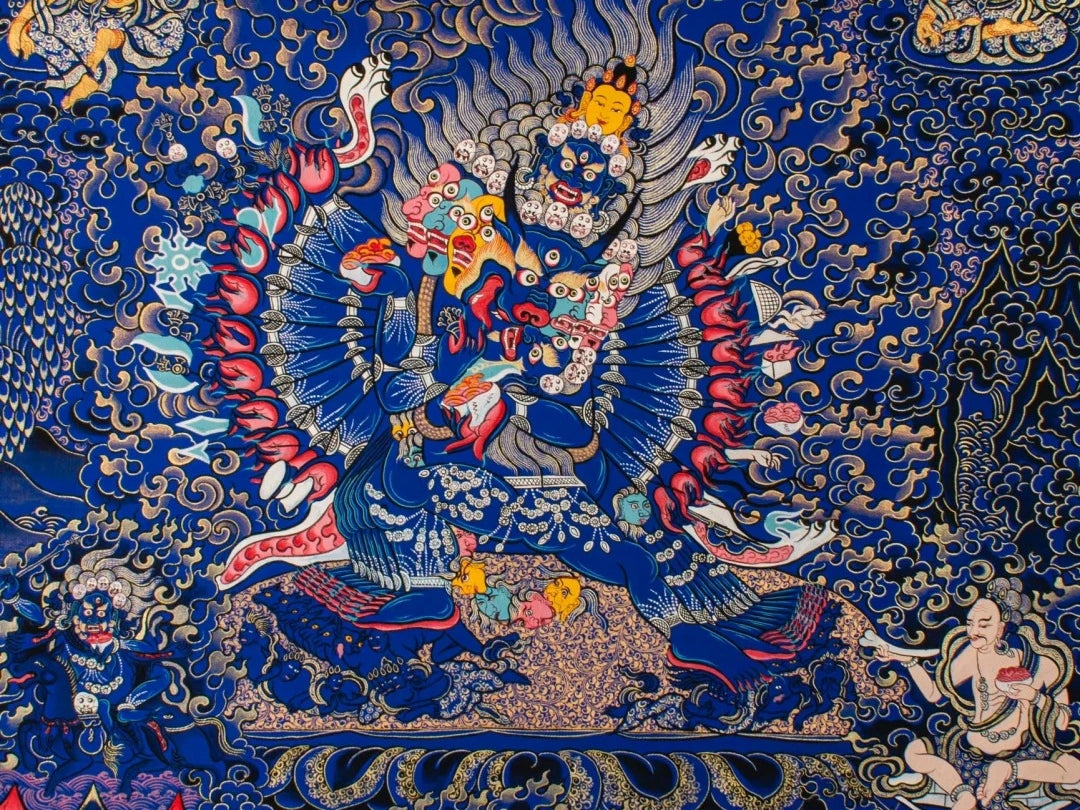In the rich tapestry of Tibetan Buddhism, Vajrakilaya—known in Tibetan as Püba Dorje—stands out as the wrathful form of Manjushri, embodying the inseparable union of śūnyatā (emptiness) and prajñā (wisdom). With a fearsome blue-black body, three heads (each with three eyes), six arms, and sixteen legs, Vajrakilaya wields the legendary diamond axe (phurba) to sever inner afflictions, conquer obstacles, and purify negative karma. Today, wearing a Phurba vajra ring or Tibetan protector jewelry channels this transformative energy, reminding us that real power comes from cutting through our own attachments.
The Symbolic Portrait of Vajrakilaya
-
Three Heads (Tri-vision):
-
White Right Face: The wrathful form of Mahākāla, representing the Buddha’s sacred body and the power to pacify external obstacles.
-
Red Left Face: The fiery aspect of Amitabha or Avalokiteshvara, symbolizing the eloquence of enlightened speech.
-
Blue Central Face: The emanation of Manjushri, representing the piercing clarity of enlightened mind.
-
-
Six Arms & Implements of Transformation:
-
Nine‑pronged Iron Phurba: Splits delusion and fear across the three realms and nine vehicles of beings.
-
Five‑pronged Golden Phurba: Transmutes the “five poisons” (attachment, anger, ignorance, pride, jealousy) into the “five wisdoms.”
-
Flaming Prajñā Flame: Incinerates mental afflictions, revealing pure awareness.
-
Trident (Khaṭvāṅga): Symbolizes mastery over the three classes of dakini and the spacious power of emptiness.
-
Gesture‑of‑Union Hands: Pressing together a single‑bladed phurba, pledging to eradicate obstacles with unwavering commitment.
-
Additional Hands in Protective Mudras: Signaling refuge and unshakeable resolve.
-
-
Sixteen Legs: Dancing upon two male and two female demons, these legs stand for the sixteen “space expanse” aspects—reminding practitioners to step beyond dualistic limitations.
Vajrakilaya’s appearance—adorned with bone ornaments, a five‑skull crown, and tiger‑skin skirt—speaks to his mastery over ignorance, attachment, and aversion, the very three poisons that bind us.

Why Wear Vajrakilaya Jewelry?
-
Daily Reminders of Inner Work:
A vajrakilaya necklace or Phurba vajra ring brings the practice off the cushion and into everyday life. Touching the pendant can trigger a moment of clarity: “What am I clinging to right now?” -
Protection and Purification:
Just as Vajrakilaya subdues demonic forces in mythic cities, his image on a Tibetan protector jewelry piece serves as a talisman against negative influences—both internal (self‑doubt, fear) and external (stress, chaos). -
Embodied Wisdom:
The phurba’s three prongs symbolize the transcendence of the three realms (desire, form, formlessness). Wearing this symbol encourages us to live from the truth of emptiness, freeing us from rigid self‑identities. -
Connection to Lineage:
Phurpa practice is traditionally transmitted through empowerment by an authorized lama. Adorning vajrakilaya jewelry can serve as a personal link to that living lineage and its blessings.

Mindful Ways to Integrate Phurba Jewelry
-
Morning Reflection: Spend a minute holding your pendant, visualizing the diamond axe slicing through a specific self‑limiting belief.
-
Stress Anchor: When feeling overwhelmed, gently spin or rotate the phurba symbol on your necklace, inviting protective energy.
-
Evening Gratitude: Offer silent thanks to Vajrakilaya’s power to guide your day with clarity, dedicating any merit toward the welfare of all beings.
Craftsmanship and Meaning
At QiLing Aura, each Phurba vajra ring is handcrafted by Tibetan artisans using S925 sterling silver or ritual brass. The miniature phurba is forged and etched with precise iconographic detail—nine prongs, sharp edges, and the deity’s wrathful gaze—ensuring you’re wearing not just a piece of jewelry, but a portable practice tool.




